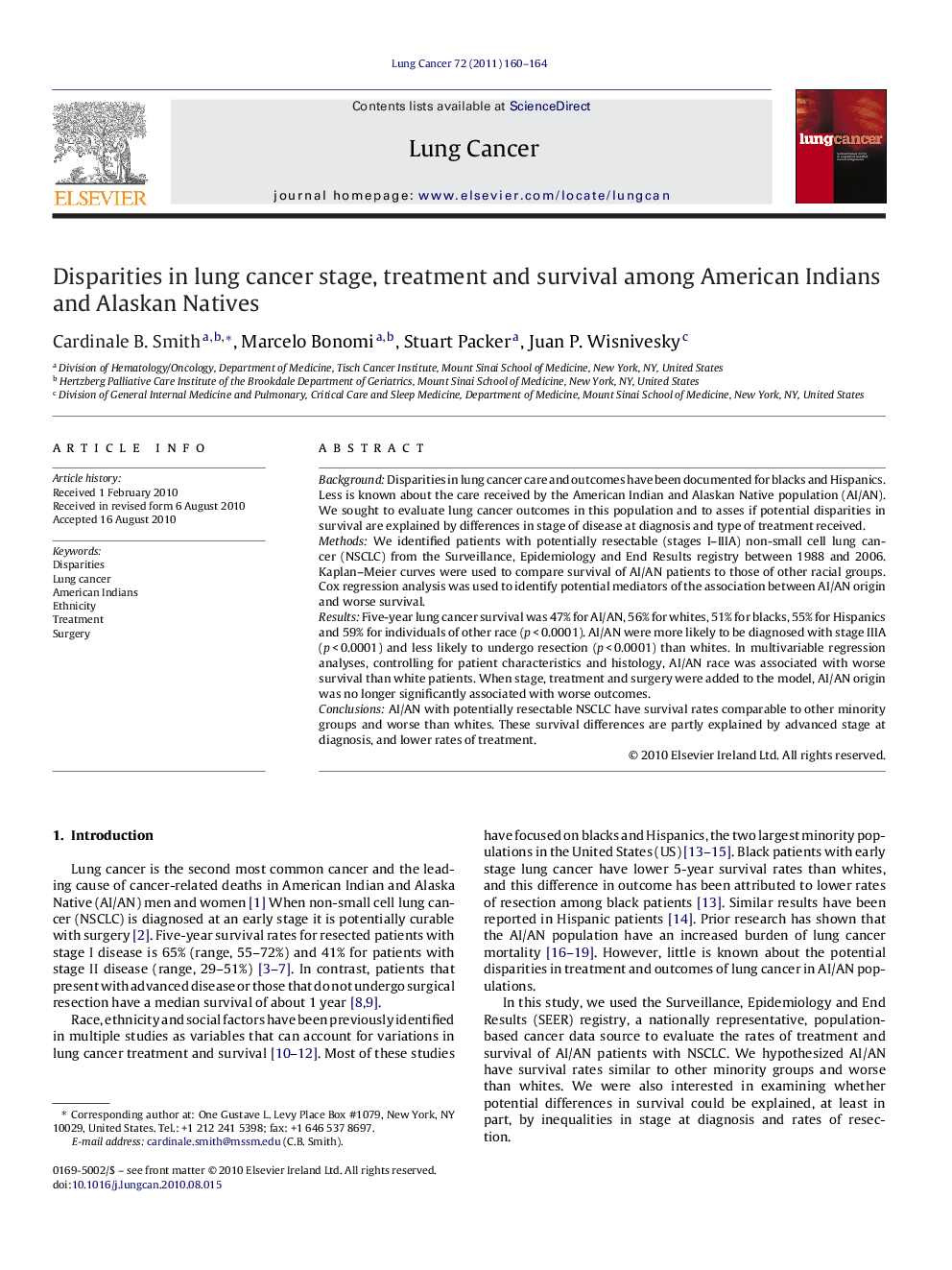| Article ID | Journal | Published Year | Pages | File Type |
|---|---|---|---|---|
| 2141894 | Lung Cancer | 2011 | 5 Pages |
BackgroundDisparities in lung cancer care and outcomes have been documented for blacks and Hispanics. Less is known about the care received by the American Indian and Alaskan Native population (AI/AN). We sought to evaluate lung cancer outcomes in this population and to asses if potential disparities in survival are explained by differences in stage of disease at diagnosis and type of treatment received.MethodsWe identified patients with potentially resectable (stages I–IIIA) non-small cell lung cancer (NSCLC) from the Surveillance, Epidemiology and End Results registry between 1988 and 2006. Kaplan–Meier curves were used to compare survival of AI/AN patients to those of other racial groups. Cox regression analysis was used to identify potential mediators of the association between AI/AN origin and worse survival.ResultsFive-year lung cancer survival was 47% for AI/AN, 56% for whites, 51% for blacks, 55% for Hispanics and 59% for individuals of other race (p < 0.0001). AI/AN were more likely to be diagnosed with stage IIIA (p < 0.0001) and less likely to undergo resection (p < 0.0001) than whites. In multivariable regression analyses, controlling for patient characteristics and histology, AI/AN race was associated with worse survival than white patients. When stage, treatment and surgery were added to the model, AI/AN origin was no longer significantly associated with worse outcomes.ConclusionsAI/AN with potentially resectable NSCLC have survival rates comparable to other minority groups and worse than whites. These survival differences are partly explained by advanced stage at diagnosis, and lower rates of treatment.
